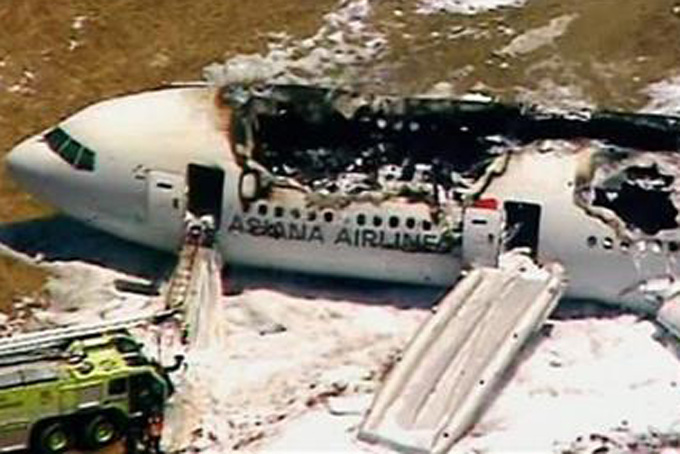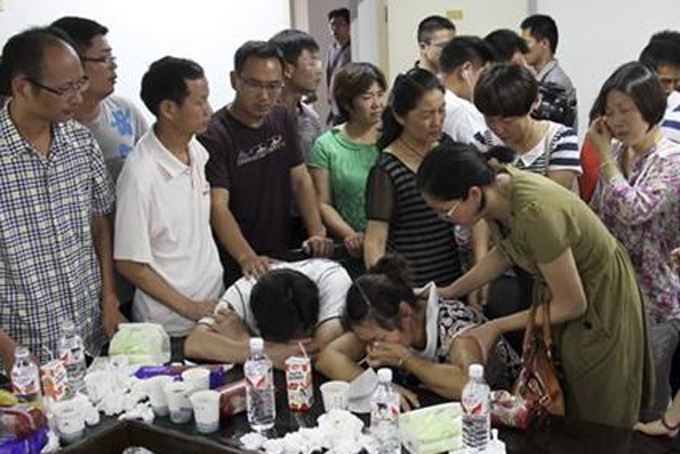
This frame grab from video provided by KTVU shows the scene after an Asiana Airlines flight crashed while landing at San Francisco Airport on Saturday, July 6, 2013, in San Francisco. (AP Photo/KTVU)
by Jason Dearen and Joan Lowey
SAN FRANCISCO (AP) — Police officers threw utility knives up to crew members inside the burning wreckage of Asiana Airlines Flight 214 so they could cut away passengers’ seat belts. Passengers jumped down emergency slides, escaping the smoke. One walked through a hole where a rear bathroom had been.
Amid the chaos, some urged fellow passengers to keep calm, even as flames tore through the Boeing 777’s fuselage.
As investigators try to determine what caused the crash of Flight 214 that killed two passengers Saturday at San Francisco International Airport, the accident left many wondering how nearly all 307 people aboard were able to make it out alive.

Parents of Wang Linjia, center, are comforted by parents of some other students who were on the Asiana Airlines Flight 214 that crashed at San Francisco International Airport, at Jiangshan Middle School in Jiangshan city, in eastern China’s Zhejiang province, Sunday July 7, 2013. Chinese state media have identified the two people who died in the plane crash at San Francisco International Airport on Saturday as Ye Mengyuan and Wang Linjia, students at Jiangshan Middle School in China’s eastern Zhejiang province. (AP Photo)
“It’s miraculous we survived,” said passenger Vedpal Singh, who had a fractured collarbone and whose arm was in a sling.
Investigators took the flight data recorder to Washington, D.C., overnight to begin examining its contents for clues to the last moments of the flight, officials said. They also plan to interview the pilots, the crew and passengers.
“I think we’re very thankful that the numbers were not worse when it came to fatalities and injuries,” said National Transportation Safety Board chief Deborah Hersman on NBC’s “Meet the Press” on Sunday. “It could have been much worse.”
Hersman said investigators are looking into what role the shutdown of a key navigational aid may have played in the crash. She said the glide slope — a ground-based aid that helps pilots stay on course while landing — had been shut down since June.
She said pilots were sent a notice warning that the glide slope wasn’t available. Hersman told CBS’ “Face the Nation” that there were many other navigation tools available to help pilots land. She says investigators will be “taking a look at it all.”
Since the crash, clues have emerged in witness accounts of the planes approach and video of the wreckage, leading one aviation expert to say the aircraft may have approached the runway too low and something may have caught the runway lip — part of a seawall at the foot of the runway.
San Francisco is one of several airports around the country that border bodies of water that have walls at the end of their runways to prevent planes that overrun a runway from ending up in the water.
Since the plane was about to land, its landing gear would have already been down, said Mike Barr, a former military pilot and accident investigator who teaches aviation safety at the University of Southern California.
It’s possible the landing gear or the tail of the plane hit the seawall, he said. If that happened, it would effectively slam the plane into the runway.